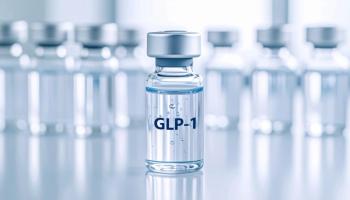
New Research Leads to Binding Protein Development for Cancer Treatment
Research may lead to the development of new types of binding proteins for biological sugar structures, which play a significant role in cancer and infectious diseases.
A research team from the Technical Unveristy of Munich is focused on designing artificial binding proteins for therapeutic applications. Their findings may lead to the development of new types of binding proteins for biological sugar structures, which play a significant role in cancer and infectious diseases.
“The recognition of specific sugar molecules, or so-called carbohydrates, is of vital importance in many biological processes,” said researcher Ame Skerra, professor of biological chemistry, in a press release.
Most cells carry a marker consisting of sugar chains, which are attached to the outside of the cell membrane or to the membrane proteins, thus enabling the body to identify where the cells belong or whether certain cells are foreign. Pathogens also have sugar structures of their own or they can bind to these, according to the study authors.
Proteins perform a wide range of functions within cells, generally have only low affinity to sugars. Thus, their molecular recognition poses a challenge due to the fact that water molecules look similar to sugar molecules, which means that they are hidden in aqueous environment within cells. Therefore, the research team set out to design an artificial binding protein with a chemical composition that makes it easier to bind to biological sugar structures.
Using the possibilities opened by synthetic biology, the research team employed an additional artificial amino acid, a boric acid group, into the amino acid chain of a protein. In doing so, researchers created an entirely new class of binding protein for sugar molecules. This artificial sugar-binding function is superior to natural binding proteins, known as lectins, both in strength and in possible sugar specificities, according to the study authors.
“The sugar-binding activity of boric acid and its derivatives has been known for nearly a century,” Skerra said. “The chemical element boron is common on earth and has low toxicity, but so far has largely remained unexplored by organisms.”
By using X-ray crystallography, the research team succeeded in unraveling the crystal structure of a model complex of the artificial protein, allowing them to validate the biomolecular concept.
Following approximately 5 years of fundamental scientific research, the findings from professor Skerra’s laboratory can now be applied to practical medical needs. Skerra explained, “our results should not only be used to support the future development of new carbohydrate ligands in biological chemistry, but should also pave the way for creating high-affinity agents for controlling or blocking medically-relevant sugar structure on cell surfaces.”
A blocking agent could be used for conditions in which strong cell growth is evident or when pathogens are attaching themselves to cells, such as in oncology and virology. If the study authors are successful in blocking the sugar-binding function and in slowing down the progress of a disease, they said it would give the patient’s immune system sufficient time to mobilize the body’s natural defenses.
Reference
- Blocking sugar structures on viruses and tumor cells [news release]. TUM website. Published March 17, 2020. https://www.tum.de/nc/en/about-tum/news/press-releases/details/35948/. Accessed March 23, 2020.
Newsletter
Stay informed on drug updates, treatment guidelines, and pharmacy practice trends—subscribe to Pharmacy Times for weekly clinical insights.

















































































































































































































